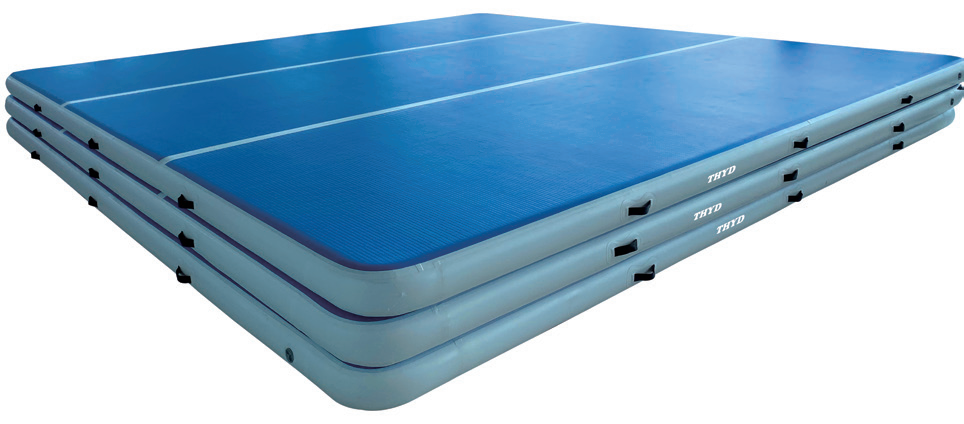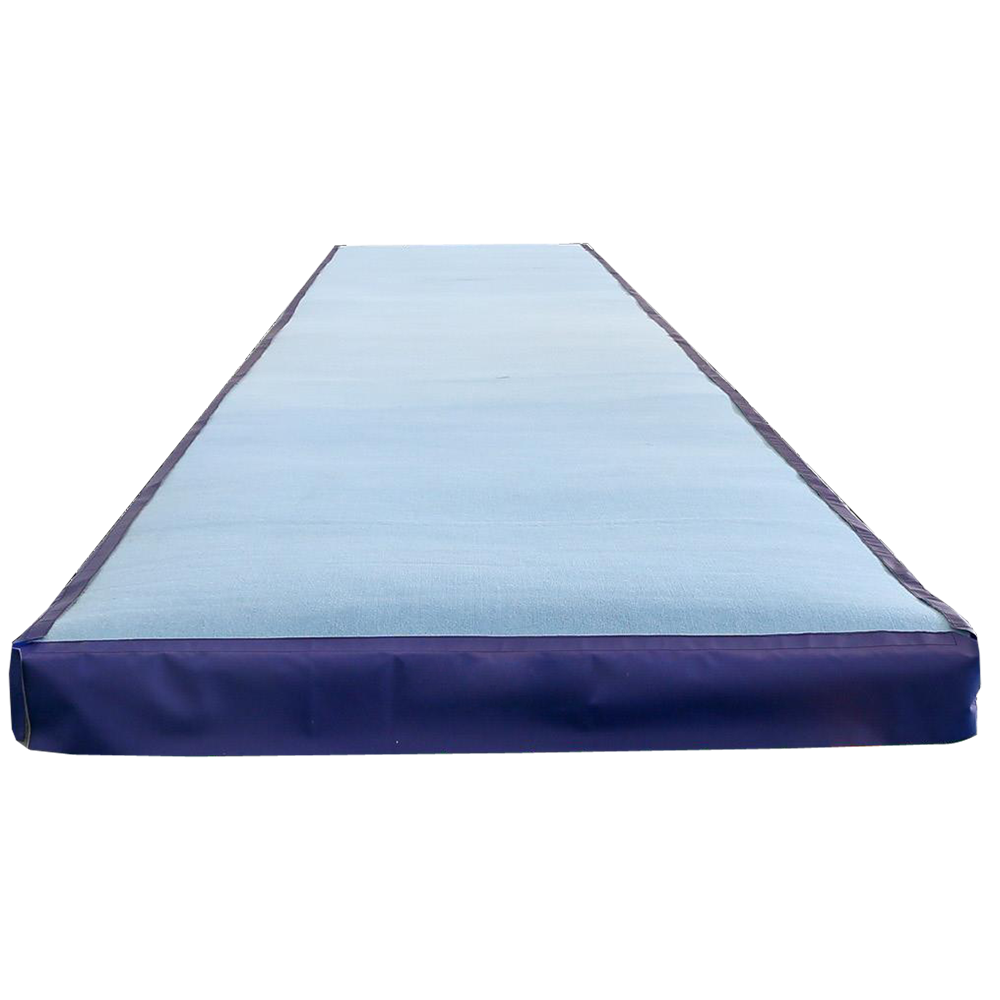Tumble Track Mastery: Tips and Techniques for Gymnasts
Gymnastics is a sport that demands precision, control, and hours of repetitive practice. For athletes looking to refine their tumbling, one piece of equipment has become essential both in professional gyms and at-home practice setups: the Tumble Track. This long, springy runway provides the bounce, cushioning, and directional control needed for gymnasts of all levels to master their skills safely and effectively.
In this guide, we will explore the importance of Tumble Track training, break down essential techniques, provide practical tips for progression, and highlight how gymnasts can use this tool to unlock their full potential.
Why the Tumble Track is a Game-Changer
The Tumble Track is more than just a trampoline in a different shape. Unlike traditional trampolines designed for vertical bounce, a Tumble Track is a narrow, elongated surface that provides controlled rebound and horizontal momentum. This makes it ideal for practicing tumbling passes, perfecting form, and reducing impact stress on the joints.
For gymnasts, cheerleaders, martial artists, and even stunt performers, the Tumble Track offers a safe and efficient environment to practice difficult skills repeatedly without the same risk of injury present on harder floors.
Key benefits include:
Reduced impact on knees, ankles, and hips.
Greater ability to repeat complex tumbling sequences.
Improved confidence when attempting new skills.
Portability and versatility, especially with inflatable air tracks.
Getting Started: Basics of Training on a Tumble Track
Before diving into advanced flips and passes, gymnasts must develop a strong foundation. A Tumble Track should be introduced gradually, starting with the basics.
Warm-Up and Preparation
Every training session should begin with proper stretching and dynamic warm-ups. Focus on core engagement, shoulder mobility, and hip flexibility. A few minutes of bouncing on the Tumble Track at a low intensity helps prepare the body for more demanding movements.
Learning Directional Control
Unlike trampolines, which encourage vertical bouncing, the Tumble Track promotes horizontal movement. Beginners should first practice running, jumping, and landing drills to get comfortable with the surface. Controlled hops, skips, and rolls are excellent ways to build familiarity.

Building Air Awareness
Air awareness is critical in gymnastics. Simple drills such as tuck jumps, straddle jumps, and pike jumps help athletes learn how their bodies respond to the Tumble Track’s rebound. From there, they can progress to front and back rolls before attempting aerial moves.
Essential Techniques for Tumble Track Training
Handstands and Cartwheels
Mastering hand placement and balance on the Tumble Track sets the stage for more advanced skills. The slightly springy surface encourages proper weight distribution and teaches gymnasts to control momentum.
Round-Offs
A strong round-off is the gateway to many tumbling passes. Practicing round-offs on the Tumble Track allows athletes to generate more power while maintaining alignment, making it easier to connect to skills like back handsprings.
Back Handsprings
The controlled rebound of a Tumble Track makes it one of the best tools for practicing back handsprings. Gymnasts can focus on pushing through the shoulders, snapping down, and maintaining a strong hollow body position without the harsh landings of a hard floor.
Front Handsprings
Similar to back handsprings, front handsprings benefit from the forgiving surface of the Tumble Track. Athletes can drill the forward lunge, blocking through the arms, and clean landings with less strain on the body.
Saltos and Flips
Front tucks, back tucks, and layouts are core tumbling skills. The Tumble Track provides a safe environment for repetition, helping gymnasts build muscle memory and confidence. As skills progress, twists and more advanced variations can be added.
Connected Passes
The real power of the Tumble Track lies in its ability to mimic floor routines. Athletes can link skills such as round-off, back handspring, and back tuck into smooth passes. Repeated practice allows gymnasts to refine transitions and increase speed.
Tips for Maximizing Training Efficiency
Focus on Technique, Not Just Power
While the Tumble Track gives extra bounce, it should not become a crutch. Gymnasts must pay attention to proper body positions, tight cores, and clean landings. Practicing on the Tumble Track should complement, not replace, training on spring floors.
Use Video Analysis
Recording sessions provides valuable feedback. By reviewing footage, athletes can spot flaws in technique, such as bent knees, low arm swings, or poor landings. Coaches often use slow-motion replays to refine details.
Combine with Conditioning Drills
Core strength, shoulder stability, and leg power are essential for tumbling. Pairing Tumble Track sessions with conditioning exercises such as planks, hollow body holds, plyometric jumps, and resistance training ensures athletes develop balanced strength.
Practice Progressions
Complex skills should be broken into progressions. For example, before attempting a layout, gymnasts should perfect tucks and pikes. The Tumble Track allows safe repetition of each stage until mastery is achieved.
Prioritize Safety
Always use safety mats around the Tumble Track, particularly at the ends. Spotters are recommended for beginners learning new skills. For inflatable tracks, ensure proper inflation levels to prevent instability.
Advanced Techniques on the Tumble Track
Twisting Skills
Once basic flips are mastered, gymnasts can progress to twists such as fulls and doubles. The consistent rebound of a Tumble Track helps athletes focus on body alignment, arm placement, and spotting.
Combination Passes
Advanced athletes often practice combinations like round-off, back handspring, whip back, and full twist. The length of the Tumble Track allows for smooth execution of these sequences.
Cheerleading Passes
For cheerleaders, the Tumble Track is particularly valuable in practicing connected passes that resemble competition routines. It helps build endurance and confidence in hitting clean landings under pressure.
Martial Arts and Stunt Work
Beyond gymnastics, martial artists and stunt performers use the Tumble Track to rehearse acrobatics safely. Practicing kicks, flips, and rolls on this surface reduces injury risk and builds body control.
Common Mistakes to Avoid
Relying too heavily on the bounce instead of proper technique.
Rushing progressions without mastering fundamentals.
Neglecting conditioning, leading to imbalances and higher injury risk.
Ignoring safety protocols like spotters, mats, and supervision.
Maintaining Your Tumble Track
For long-lasting performance, proper care is essential:
Keep the surface clean and free from dust or sharp objects.
For inflatable air tracks, avoid over-inflating and store in a cool, dry space.
For spring tracks, regularly check springs and fabric for wear.
Always follow the manufacturer’s maintenance guidelines.
Why Every Gymnast Should Train with a Tumble Track
The Tumble Track offers the perfect balance between safety, repetition, and performance enhancement. For beginners, it builds confidence and reduces injury risk. For advanced athletes, it allows refinement of complex sequences and provides the repetition needed to achieve mastery. Its versatility also makes it valuable for multiple disciplines beyond gymnastics, ensuring it remains a staple piece of training equipment.
Conclusion
Mastering gymnastics skills requires dedication, precision, and the right tools. The Tumble Track has proven itself as an invaluable training aid, offering gymnasts a safe, effective, and versatile platform for building tumbling strength and confidence. From beginners practicing rolls to advanced athletes refining complex twisting passes, the Tumble Track provides the consistent rebound and controlled environment needed for progress.
By combining proper technique, progressive training, and safety measures, gymnasts can maximize the benefits of this equipment and take their routines to the next level. Whether at home, in a professional gym, or during team practice, the Tumble Track stands as one of the best investments in a gymnast’s development.
FAQ
Is the Tumble Track only for advanced gymnasts?
No. It is suitable for all levels, from beginners learning basic rolls to elite athletes refining advanced tumbling passes.
Can I use a Tumble Track at home?
Yes. Inflatable air tracks are portable and designed for home use, provided you have enough space and a safe surface to set them up.
How does a Tumble Track compare to a trampoline?
While trampolines provide vertical bounce, the Tumble Track is designed for horizontal movement, making it safer and more effective for practicing floor-like routines.
How long should a Tumble Track be for effective training?
Gym versions are often 40 feet or more, while home versions typically range from 10 to 20 feet, depending on available space.
Does training on a Tumble Track replace floor practice?
No. It complements floor training by reducing impact and allowing more repetitions, but gymnasts should still practice on spring floors to prepare for competition.
Table of Contents
- Tumble Track Mastery: Tips and Techniques for Gymnasts
- Why the Tumble Track is a Game-Changer
- Getting Started: Basics of Training on a Tumble Track
- Essential Techniques for Tumble Track Training
- Tips for Maximizing Training Efficiency
- Advanced Techniques on the Tumble Track
- Common Mistakes to Avoid
- Maintaining Your Tumble Track
- Why Every Gymnast Should Train with a Tumble Track
- Conclusion
- FAQ


